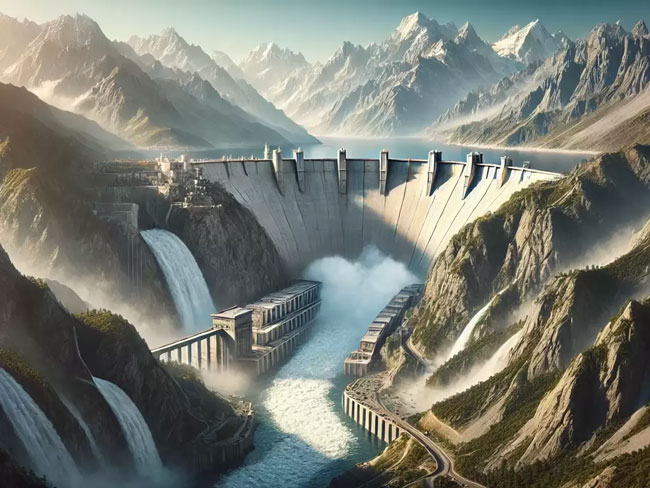Desk:Following the suspension of the Indus Waters Treaty (IWT), the Indian government has initiated a new plan for the monthly flushing of the Salal and Baglihar dams on the Chenab River in Jammu and Kashmir. This decision comes in the wake of the recent Pahalgam terror attack, which claimed the lives of 26 tourists. The move is widely seen as a strategic response by India against Pakistan.
According to recommendations from the Central Water Commission, both the Salal (690 MW) and Baglihar (900 MW) hydropower projects will now undergo regular monthly flushing.
What is Flushing and Why is it Important?
Flushing refers to the process of releasing sediment, silt, and debris accumulated in dam reservoirs through strong water currents. Over time, this sediment reduces the storage capacity of reservoirs and hampers the efficiency of turbines, thereby affecting power generation. Regular flushing helps restore reservoir capacity and ensures consistent electricity production.
7.5 Million Cubic Meters of Silt Removed in First Round
As per a report in The Indian Express, the flushing operation began in early May, during which more than 7.5 million cubic meters of silt was removed from the Salal and Baglihar reservoirs. This marks the first time such extensive cleaning has been undertaken at these dams. Notably, the Salal Dam was constructed in 1987, while Baglihar became operational in 2008–09.
Pakistan Objects, India Holds Firm
Under the Indus Waters Treaty, Pakistan has repeatedly objected to flushing activities in the past, arguing that sudden water releases increase downstream flow, while reservoir refilling reduces flow later on. However, India has now clarified that following the suspension of the treaty, it is no longer obligated to inform Pakistan about water-related decisions, including flushing operations.
Fast-Tracking Pending Hydropower Projects
Government sources indicate that India is now moving swiftly to complete several hydropower projects that were previously stalled due to Pakistani objections. These include Pakal Dul (1,000 MW), Kiru (624 MW), Kwar (540 MW), and Ratle (850 MW)—all located on the Chenab River.
Current Status of the Indus Waters Treaty
The Indus Waters Treaty, signed on September 19, 1960, after nine years of negotiations, allocated full rights to India over the eastern rivers—Sutlej, Beas, and Ravi—while Pakistan was allotted the western rivers—Indus, Jhelum, and Chenab.
Pakistan Now Seeking Dialogue
On April 24, India formally informed Pakistan that the treaty would remain suspended until Pakistan “fully and verifiably stops supporting terrorism.” In response, Pakistan has expressed a willingness to hold discussions and proposed a meeting in May. It’s worth noting that India had previously sought a review and amendment of the treaty in January 2023 and again in September 2024, but Pakistan did not respond constructively. Now, with India enforcing an immediate suspension, Pakistan has, for the first time, shown interest in dialogue.
Strategic Leverage for India
While Salal and Baglihar are run-of-the-river projects and cannot hold water for extended periods, the introduction of monthly flushing and acceleration of new projects gives India greater control over the timing and volume of water flows. This could potentially impact Pakistan’s agriculture and hydroelectric dependency. However, for India to fully harness this strategic leverage, it would require additional reservoirs and storage capacity.




